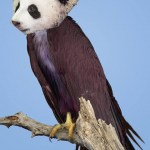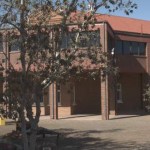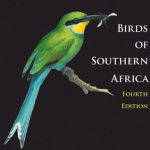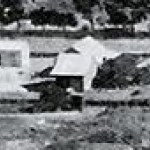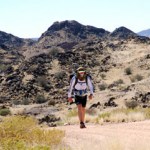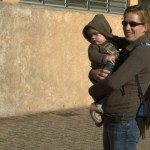south africa
You've heard of Homo naledi, the strange "human ancestor" (really, a cousin) found a while back in South Africa. There were many skeletal remains in a cave, in the kind of shape you'd expect if they had crawled into the cave and died there, not much disturbed. They look enough like other members of our genus, Homo, to be called Homo, but if we assume that increase in brain size is the hallmark of our species, they seem to be an early grade.
Over the last ten years, we have come to appreciate the fact that our genus may have differentiated into multiple species that did not have a large brain…
People were fascinated, excited, and some were enraged, by this awareness raising campaign of BirdLife South Africa.
I might have preferred this modification:
A City of Death and Misery
Everything I’m about to tell you in this story is true.1 You might not want to read this story while you are alone or while sitting in the dark.2
Kimberley South Africa is said to be the most haunted city in the world, and it certainly is a city with a remarkable and dark history. The culture of Kimberley is constructed from the usual colonial framework on which are draped the tragic lives of representatives from almost every native culture from thousands of kilometers around, as well as the seemingly ubiquitous Europeans with their greed, their unexamined privilege…
Imagine going back in time to visit Nelson Mandela in prison and telling him this: "You will live through this and be free, you'll lead your country and set an unattainable example of leadership, you'll retire as president and die at a very old age. The violence associated with the end of Apartheid will be so little it will be mostly forgotten. There will be truth. And reconciliation." That would have been a remarkable, impossible prediction at the time, because he was clearly destine to die in prison, and there was little possibility of reconciliation and there was every chance of…
An article came out today in Wunderground.com about an iconic bird (in both good and bad ways) in South Africa, the Hadeda Ibis (Bostrychia hagedash). There are stores named after the birds, songs dedicated to them and even a documentary called "Hadeda Sunrise" that you can watch here:
About ten or twelve years ago, back when I was in essence, a newly minted skeptic and public supporter of science-based medicine, I was so naive. There I was, having just discovered the Usenet newsgroup misc.health.alternative and confronting the original wretched hive of scum, quackery, and pseudoscience, and I thought I had seen everything. Yes, I realize these days that, even a decade on I haven't seen everything and will never see everything, but back then I couldn't believe that, having learned for the first time about coffee enemas, various forms of cancer quackery, each seemingly more…
When traveling and working in South Africa, I've always used Newman's guide to the birds of Southern Africa, and more recently, I found the Sasol guide to be helpful as well. (I discuss both briefly here.) Now, I've got on my desk a copy of Princeton's Birds of Southern Africa: Fourth Edition by Ian Sinclair, Phil Hockey, Warwick Tarboton and Peter Ryan. You will know Sinclair from his South of the Saraha bird guide.
All three books cover about the same species, as far as I can tell (just under 1,000) and have a similar range of illustration and information. They all have overview…
In late November, 1899, a British military unit which included an embedded reporter was ambushed by an Afrikaner unit in what is now Natal Province, South Africa. This was during the Anglo-Boer war, which was to be the largest military adventure to date in the history of the United Kingdom. The British had been traveling in an armored battle train, a kind of tank-train hybrid that was being used in that war mostly with poor results. The train was partly derailed, and the British were under fire, their only hope to make a break for it, or to hunker down and wait for reinforcements which may…
We three had somehow wound our way down into the canyon without experiencing any really steep slopes, but having walked for several miles in the sandy dry riverbed, Trusted Companion, Young One, and I were now looking rather hopelessly at unsafe-to-climb cliffs on both sides, covered with imposing vegetation of the kind that sports a thorn every few inches. The sun was low enough that the canyon floor was in a dark shadow, and the air was beginning to chill down. We were far enough from the vehicle, lost enough, and sufficiently plan-free that it would be perfectly reasonable to worry that…
... Continued ...
Obsession can be a good thing. And I'm not talking about some dumb-ass perfume.
The Augrabies Ultra. 250 kilometers over five days. My field buddy was doing that every year.
Stuck in the field without a gym for three weeks was going to be tough, but I worked out two ways to stay in shape. First, every time we were in a city with a gym, Lynne got me into the gym, and my field crew usually came along as well. Lynne knew all the gyms and all the people who worked in all the gyms, and generally had the ability to make things happen. This mainly occurred in the city of…
... Continued ...
I started out walking a good six feet behind her, to avoid the sand she was kicking up and the occasional thorn-lined branch that might swing back in the wake of anyone walking through the African Bush. We were traversing open country in the Kalahari, in an area sealed off from people owing to the presence of unfriendly lions and other dangers. We were doing this in part because we both felt like we had been locked up for days and needed some freedom; We needed freedom from confinement, freedom from the people we were with, freedom from patronizing park employees, freedom…
Formerly known as Day of the Vow, as South African holiday, and a time of reflection on dramatic historical and cultural changes.
In 1836 about 400 or so southern African farmers of European Ancestry, known as Voortrekkers, killed about 3,000 Zulu out of an army of 10,000 or so. It was a turning point in South African history. Prior to what became known as the Battle of Blood River, the Voortrekkers made a pact with god; Let us win this battle and we'll make this an annual holiday and build a church and stuff. It is possible that god needed a church and a day off, so he let them win. It's…
tags: FuÃball, sports, soccer, futbol, World Cup Soccer, South Africa, FIFA, humor, funny, television, The Daily Show, streaming video
This video explores the local South African opinions about the World Cup -- in one scene, the reporter asks: "What's more African than the subjugation of black people?"
The Daily Show With Jon Stewart
Mon - Thurs 11p / 10c
World Cup 2010: Into Africa - Goal Diggers
www.thedailyshow.com
Daily Show Full Episodes
Political Humor
Tea Party
A diagram of how the skeletons of Australopithecus sediba came to be preserved in the Malapa cave deposit. From Dirks et al, 2010.
A little less than two million years ago, in what is now South Africa, a torrential downpour washed the bodies of two humans into the deep recesses of a cave. Just how their remains came to be in the cave in the first place is a mystery. Perhaps they fell in through the gaping hole in the cave roof just as hyenas, saber-toothed cats, horses, and other animals had, but, however the humans entered the cave, their bones ultimately came to rest in a natural bowl…
CHAI RANT!!!11!!
It is time for another Chai Rant.
Years ago, about the twentieth word I learned in KiSwahili was "chai" ... which, if you know Kiswahili you would immediately recognize as a borrowed term becasue it is a very unlikely set of phonemes for that language. In KiSwahili, Chai means tea.
If I tell someone in the United States, for some reason, "In KiSwahili, 'chai' means 'tea'" the usual response will be "Oh, yea, I know that stuff. I like/don't like "chai." Chai is tea with cardamom and cinnamon and bla bla bla...."
And then I have to make the "shut up moron" clamy-clampy…
Souvenir shops in South Africa are full of lamps made out of ostrich eggs. The eggs are so big and strong that you can carve and cut intricate designs into their shells. The egg's contents are emptied through a hole and a bulb can be inserted instead, casting pretty shadows on walls and ceilings. The results are a big draw for modern tourists, but ostrich eggs have a long history of being used as art in South Africa. The latest finds show that people were carvings symbolic patterns into these eggs as early as 60,000 years ago.
Pierre-Jean Texier from the University of Bordeaux discovered a…
There's a new paper out in Nature which details the genomes of several Bushmen, and how they relate to other humans, and one particular Bantu speaking individual, archbishop Desmond Tutu. It's open access, Complete Khoisan and Bantu genomes from southern Africa. I haven't read the whole thing, but it is probably best to check out Ed Yong's very thorough review first. Here's an interesting point Ed brings up:
Most surprising of all, many of their unique SNPs are actually fairly recent developments. The Bushmen are one of the oldest human groups on the planet and you might expect their genes to…
Did you ever watch cattle? I mean, really watch them, for a few hours? Mostly they just sit or stand around munching on grass, chewing their cud, or snoozing. But every once in a while a handful of them will stand up and point in one direction. And they may take a few steps in that direction. Then a few more will join them. And once a critical mass has been reached, the whole herd will just go. Domestic cattle, wild African cape buffalo, whatever. This is what they do.
And as the cattle do, so do Scienceblogs.com bloggers. And the current stampede about to form up is about fitness. I'm…
About six months ago I had a post up on the Cape Coloureds of South Africa. As a reminder, the Cape Coloureds are a mixed-race population who are the plural majority in the southwestern Cape region of South Africa. Like the white Boers they are a mostly Afrikaans speaking population who are adherents of Reformed Christianity. After the collapse of white racial supremacy many white Afrikaners have argued that it is natural and logical to form a cultural alliance with the Cape Coloureds because of the affinity of language and faith (Afrikaans speaking Coloureds outnumber Afrikaans speaking…
Ah, penguins. You just can't help but smile. These animals are found on Boulders Beach near Cape Town, where they come so close to the erected walkways that you could potentially reach out and grab one (if the mood took you and you were an idiot).
The African penguin (Spheniscus demersus) is part of a genus with four species. The last time I saw one of them, it was off the Galapagos Islands (the Galapagos penguin), and the other two members of the group (the Humboldt and Magellanic penguins) are natives of Patagonia. They're commonly known as jackass penguins because of their distinct,…

